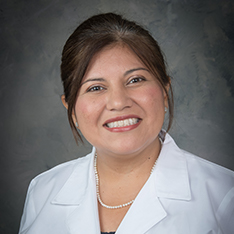Did you know 4 in 5 people diagnosed with an autoimmune disorder are female, according to the National Institutes of Health?
Autoimmune disorders happen when the body “turns against itself” and your natural immunity does not work the way it should. Your immune system consists of cells, tissues and organs that work together to protect you from bacteria and viruses.
If your immune system is weak or overactive, it could result in conditions such as lupus, rheumatoid arthritis or Sjögren’s syndrome. These conditions disproportionately affect women, and new research is untangling the reasons why.
Prevalence of Autoimmune Disorders in Women
According to Rheumatology Secrets by Sterling West and Jason Kolfenbach, these autoimmune diseases affect women more often than men:
| Disease | Female:Male Ratio |
| Hashimoto's disease | 9:1 |
| Lupus | 9:1 |
| Sjögren’s syndrome | 9:1 |
| Rheumatoid arthritis | 3:1 |
| Multiple sclerosis | 2:1 |
Causes and Risk Factors
Women tend to be at a higher risk for autoimmune diseases for a few reasons, mostly due to genetics. However, environmental factors also play a role, which explains why some men have autoimmune disorders, too.
Genetics
Some people are genetically predisposed to certain autoimmune disorders. For example, a person with a first-degree relative (parent or sibling) with lupus has a 16-fold increased risk of developing lupus, too, according to West and Kolfenbach.
X Chromosome
Additionally, new research explores the connection between the X chromosome and an increased risk for autoimmune diseases. People born female have two X chromosomes, while people born male have one X and one Y chromosome. This is what makes us biologically different.
The connection between the two X chromosomes and autoimmune disease is, simply put, complicated. Basically, having two X chromosomes produces twice the amount of protein, which could be deadly. To offset this, the body shuts off one X chromosome’s activity in each cell. This inactivation may trigger an immune response, which was recently studied and discovered by Dr. Howard Chang and his team at Stanford Medicine.
Environmental Factors
Some toxins in the environment can also put you at higher risk for some autoimmune disorders. These include:
- Smoking
- Inhaling silica dust and air pollution
- Bacteria in the mouth, lungs and gut
- Some viruses, such as Epstein-Barr virus
- UV light
- Pesticides
New research also suggests that eating large amounts of ultraprocessed foods may increase women’s risk for developing lupus. Ultraprocessed foods have been processed and include added salt, sugar, preservatives and dyes to extend their shelf life.
Some examples of ultraprocessed foods include but aren’t limited to familiar favorites like soft drinks, frozen meals, sugary breakfast cereals and chicken nuggets.
Diagnosing Autoimmune Disorders in Women
The diagnosis process will vary by condition. This is because some conditions can be confirmed with a lab test and others can’t.
Additionally, because some autoimmune conditions like lupus have a wide variety of symptoms that could be mistaken for other conditions, it may take time to get an accurate diagnosis.
Your health care provider will rule out other conditions, perform lab tests and discuss your medical history to provide a diagnosis.
Autoimmune Diseases That Affect Women
Hashimoto’s disease
Hashimoto’s disease, also called Hashimoto thyroiditis, is the inflammation of the thyroid gland. It’s caused by an autoimmune response that scars the thyroid tissue, leaving it unable to produce enough thyroid hormone. Endocrinologists treat this condition.
Symptoms
- Tiredness
- Muscle weakness
- Joint pain
- Constipation
- Weight gain
Diagnosis
Your health care provider can perform a blood test to diagnose Hashimoto’s disease.
Treatment
Medication can replace thyroid hormones that aren’t being produced naturally, and this should stop your symptoms.
Fibromyalgia
Fibromyalgia is a chronic condition that affects people of all ages, but usually presents between the ages of 30-55.
Symptoms
- Pain in the muscles and soft tissues
- Fatigue
- Trouble sleeping/nonrestorative sleep
- Stiffness
- Muscle spasms
- Mood disturbances
Treatment
While there is no cure for fibromyalgia, your health care team can help you manage it with medication, exercise, physical therapy, cognitive behavioral therapy and alternative methods.
Systemic Lupus Erythematosus (SLE or Lupus)
Lupus, also known as systemic lupus erythematosus or SLE, happens when the body’s immune system attacks itself, causing inflammation throughout the body.
Lupus affects each person differently. Some people have flare-ups that come and go, or only experience a few symptoms.
Symptoms
- Anemia
- Fatigue
- Hair loss
- Butterfly-shaped rash on the nose and cheeks
- Swollen glands
- Raised rash
Diagnosis
Because lupus symptoms are so varied and may be confused for something else, your health care provider will rule out other conditions to help make a diagnosis.
Treatment
Lupus cannot be cured, but you can take medication and make lifestyle adjustments to manage the symptoms and prevent organ damage.
Sjögren’s Syndrome
Sjögren’s syndrome is an autoimmune disorder that affects your moisture-producing glands.
Symptoms
- Dry mouth, lips and throat
- Dry eyes
- Tooth decay
- Dry nose
- Sore or cracking tongue
- Fatigue
- Joint pain
- Digestive issues
Diagnosis
Rheumatologists use a point-based test to see if your symptoms are related to Sjögren’s or another type of autoimmune disorder. The more points you have, the more likely it is you have Sjögren’s. They can also perform lab tests to support a diagnosis.
Treatment
There is no cure for Sjögren’s syndrome, but a rheumatologist can help manage your symptoms. Your provider may recommend mouth rinses, eye drops, immunosuppressants and pain relievers.
Rheumatoid Arthritis (RA)
Rheumatoid arthritis is a common chronic inflammatory illness, affecting more than 1 million Americans, according to the Rheumatoid Arthritis Support Network. RA affects the joints in your hands, arms, legs, feet and shoulders.
Symptoms
- Joint pain, stiffness and swelling
- Decreased movement
- Bumps over the small joints
- Trouble grasping things
Diagnosis
Rheumatoid arthritis may be diagnosed using one of the following:
- Imaging tests (X-ray, ultrasound or MRI)
- Fluid sample from swollen joint
- Tissue biopsy
- Blood test
Treatment
There is no cure for RA, but your provider may recommend treatments to manage pain and retain function in your joints. These may include:
- Pain relief and anti-inflammation medications
- Splints to protect the joints
- Physical therapy to increase strength and movement
- Surgery
Multiple Sclerosis (MS)
Multiple sclerosis, sometimes called MS, is a condition that affects the central nervous system. It happens because the immune system attacks myelin, the protective substance around your nerve fibers. Scar tissue forms on the myelin and your nerves can’t properly transmit electrical impulses from your brain to the other parts of your body.
It impacts about 1 million people in the U.S. Neurologists treat this condition.
Symptoms
MS symptoms present differently in each person, and are categorized as primary, secondary and tertiary. Primary symptoms are the direct result of the damaged nerves, and include:
- Pain
- Paralysis
- Weakness
- Numbness
Secondary symptoms are the complications of primary symptoms. For example, pain and weakness discourages activity and physical exercise, which results in muscle loss and decreased bone density.
Tertiary symptoms are social, and may include depression, loss of livelihood, stress and relationship problems.
Diagnosis
There is no one test to diagnose MS, but your health care provider will conduct lab, neurological and imaging tests, review your physical symptoms, and rule out other possible conditions.
Treatment
There is no cure for MS, but there are ways to manage your symptoms and improve your mobility. Options may include physical therapy, medication, and assistive devices such as canes or braces.
Rheumatology at University Health
University Health rheumatologists, endocrinologists and neurologists are experts in treating autoimmune disorders. Ask your primary care provider for a referral.





